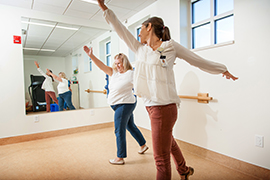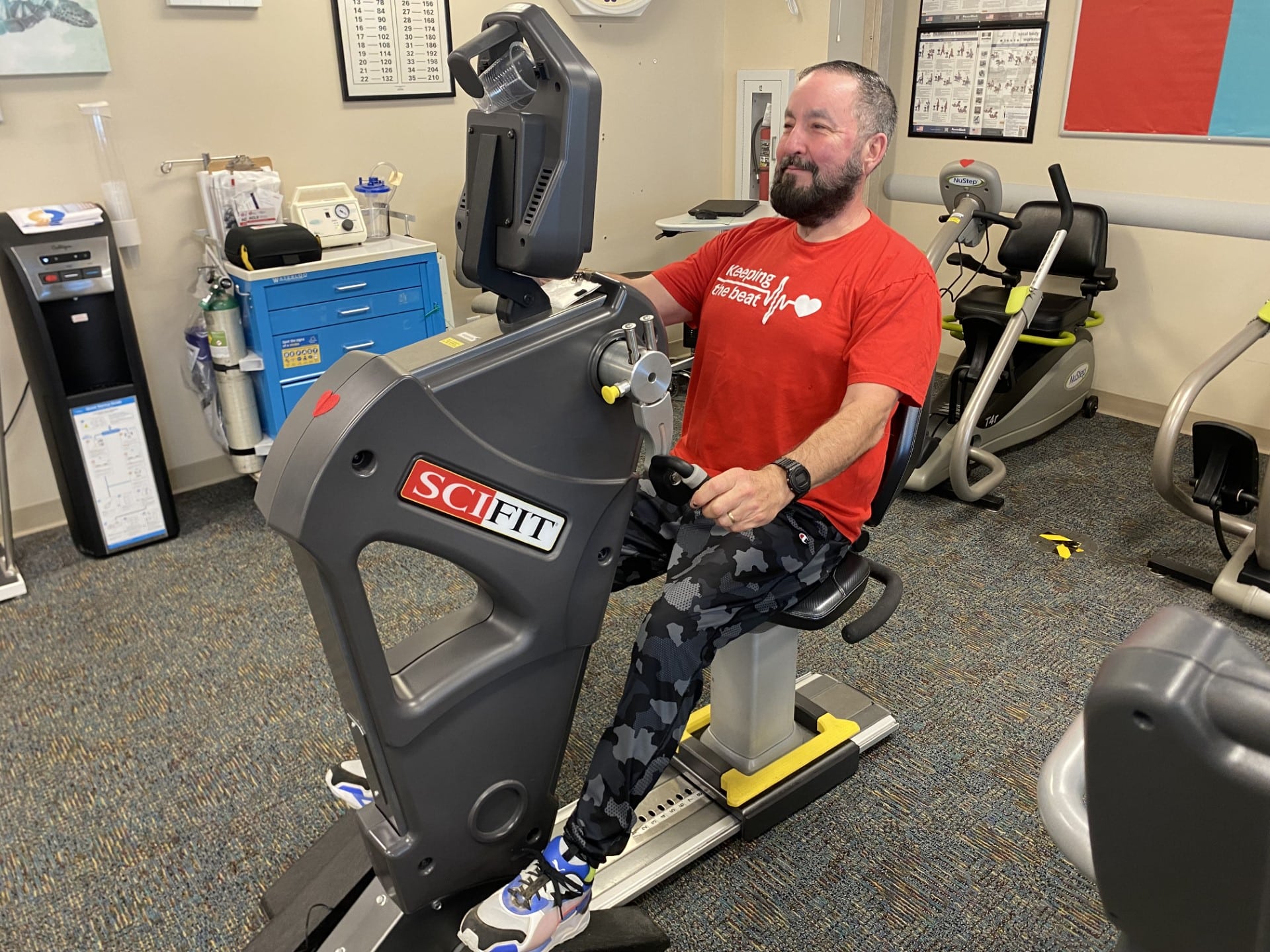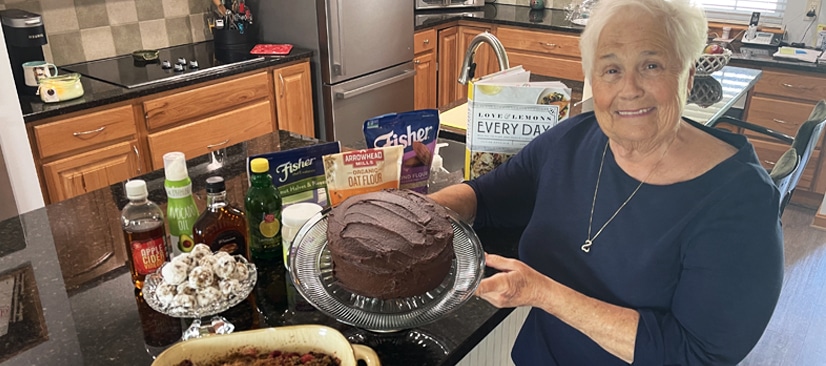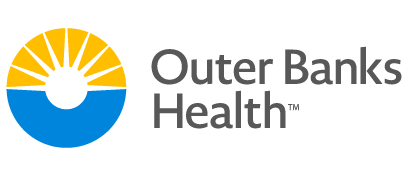• Tremor or trembling of the arms, jaw, legs, and face
• Stiffness or rigidity of the limbs and trunk
• Slowness of movement
• Impaired balance and coordination
• Soft, mumbled, monotone, or hoarse voiceThe cause of Parkinson’s is unknown. Medical experts believe the symptoms are related to a chemical imbalance in the brain caused by brain-cell death. Parkinson’s is chronic, and symptoms grow worse over time.
Although the disease may appear in younger people (even teenagers), it usually affects people in late middle age.The Outer Banks Hospital (TOBH) recently built a state-of-the-art rehabilitation therapy services building on the north end of campus. Currently, there are three therapists who are certified to work with patients who experience the symptoms caused by Parkinson’s. Angela Goetsch, OTR/L, CLT, and Lisa Minerich, OTR/L, both Occupational Therapists, are certified in the LSVT BIG program, and Nicole Kalkhoff, MA, CCC-SLP, Speech Pathologist, is certified in the LSVT LOUD program.
LSVT BIG
The LSVT BIG program focuses on training individuals with Parkinson’s and other neurological conditions to use bigger physical movements throughout their daily lives. This enables them to stay active.
Mindy Thompson is the first patient to complete the LSVT BIG program at TOBH. Diagnosed with Parkinson’s in 2007, she was referred by her neurologist to the four-week program with Goetsch of intense exercising four times a week. The exercises include big body movements like walking six feet as fast as possible, using the hands for hand-eye coordination, and walking over blocks, around objects, and in between lines, which are all timed by the therapist.
The first visit with Goetsch includes an initial assessment to get baseline times for endurance, speed, balance, and coordination. The goal is to decrease times throughout the program. In addition to the sessions with Goetsch, the patient is given a set of exercises to do twice a day on his or her own. Knowing how to do these allows the patient to sustain the benefits of the program once the sessions are over.
During the final session, Thompson was scored on her fast walking. Compared to the initial assessment, her time decreased by 5.4 seconds! “My motor skills and my back stiffness are much better,” she said. Thompson also noted, “This program gives you strategies to deal with your balance and strengthens your muscles so you can sustain longer periods of movement.” Thompson definitely recommends this program to others.
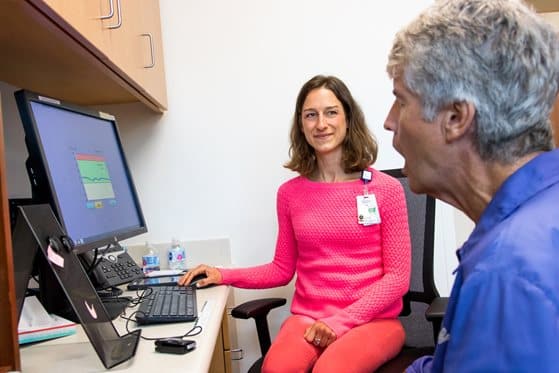
SVT LOUD
Michael Thompson (no relation to Mindy) was diagnosed with Parkinson’s in 2012. While driving down the Outer Banks Bypass, he noticed the new rehabilitation therapy services building and stopped to visit. This is how he found out about the LSVT LOUD Program. He then asked his neurologist to refer him. With Parkinson’s, Thompson’s voice has gotten progressively hoarse and quiet. Being asked to repeat himself during conversations was frustrating for him.
Like LSVT BIG, this program includes 16 sessions, four days a week, for four weeks. The hour-long program is combined with a daily homework practice which that is done on the patient’s own time.
During the hour session, Thompson takes a breath, and then begins voice exercises, speaking sentences, reading out loud, and engaging in conversation. Using a computer software program, the therapist watches to see whether the decibels are in the range they should be. If the decibels are too low, she repeatedly instructs, “Catch your breath and BE LOUD!” Kalkhoff’s motto is: It’s not about how you look, but how you sound. Often during the session, she tells Thompson to take a sip of water to help with the overuse of his vocal cords.
At the last session, Thompson’s volume was exceptional and he conversed with his wife using great enunciation. She attends the sessions so that she can learn how to work with Thompson at home. “It’s a lifelong program,” exclaimed Thompson. “I got my voice back!”
Kalkhoff noted that Thompson now has the tools he needs to be loud in his everyday life, and she adds that if a refresher session is needed, he can simply ask his physician for another referral.
To learn more about the LSVT BIG and LOUD programs at TOBH, please call 252-449-4560. We can help those who want to continue to be BIG and LOUD as they learn to function with Parkinson’s.

